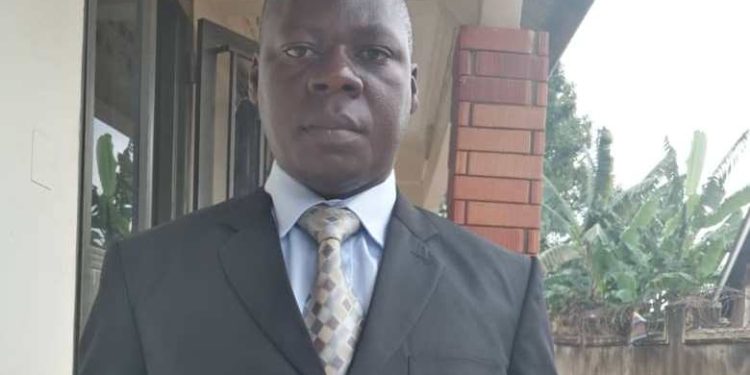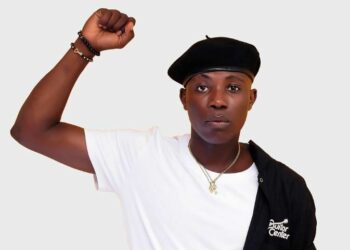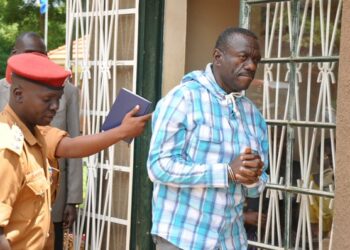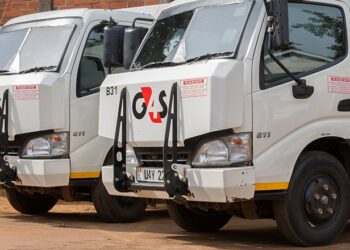It was in 2018 when I had to decide whether I had to go back and pursue a career of being a journalist, after being invited by my bosses to a Kampala based radio station to revive a radio program as a presenter, a job I had resigned in March 2017 after 10 years of hard work.
With a clear vision in mind, I decided that I will continue with what I had just started with, being at the farm deep in the village planting Hass Avocado. I don’t regret my decision because ever since I started working in 2008, I have never been sure that I am going to get rich, until when I planted an acre of Hass Avocado in Mukono. It’s said that the next billionaires are going to be fruit farmers, I am one of them. I am very happy. Currently, I have been in the business of growing Hass avocado since the beginning of 2018, over three years now.
This idea was hatched amidst confusion and lack of all the information on what and how to do it, but with a great passion to achieve success, under the guidance and mentorship of a very visionary man Mr. Sam Muwanguzi Mukasa.
Starting was as in most cases, never easy at all. The first challenge was the lack of seedlings. By then, the only way to get seedlings was through a company here that has a branch in Kenya and a nursery there, where they produce Hass seedlings. The challenge with buying from them was that you had to order and you receive the supply after eight months, but also the price was as high as $3 per seedling before, you add transport from Nairobi to Uganda.
We therefore decided to produce our own seedlings, but the first challenge was the lack of good mother trees in Uganda where to cut scions, yet getting them from Kenya was quite an hectic task.
Through perseverance, we finally found had a breakthrough and in November 2018, we transferred our first seedlings to the main garden. Currently we have 300 acres of Hass avocado. We are harvesting and still planting, targeting 600 acres before we pause.
From the start, we knew that market for Hass Avocado fruits was available and lucrative, but frankly not at the level where I see it now.
I have been taken to different parts of the country by generous community leaders to inform people there about Hass avocado, and I know that with time, the volumes from Uganda will rise and hopefully overtake Kenya.
Along the way, we have received so many phone calls, emails, whatsup and Facebook messages from buyers here and abroad who are interested in our fruits. I have profiled them and it’s a long list. Some want 1, 3, 5, 10 tonnes a week and others bigger quantities. From Latin America to Russia, they call me looking for Hass fruits.
The price of Hass on international market stunned me in November last year, when a friend of mine in UK sent me pictures from supermarkets outside London showing that a single fruit was at GBP1, 1.5, 1.8 to 2 pounds. I also have an investor from Norway who I am helping to plant some acres, he told me that in Norway a kilo of Hass can buy from $7 to $15. For a Ugandan farmer, I only target to get UGX 3000 per kilo which is 4 to 6 fruits.
I had however never been challenged by the size of market Hass avocado has, like I was in the first week of June 2021 when one of Europe’s biggest importer and Exporter, and one of the biggest exporters in Middleast emailed me. One of them wants 8- Fourty feet containers every week for 3 to 5 months, another one wants any quantity I can afford from 28 tonnes per week and above.
Another client called me from Chile and he wants me to send Hass Fruits equivalent to 10 tonnes every 3 days to U.S.A and he asked me if I am willing he deposits half of the money on my account straight away.
I unfortunately didn’t have enough avocados for such big orders given that we have just harvested for the first time in our orchard, yet even at full maturity we won’t be able to satisfy such a big market.
This is when I decided that though I have been trying to help some few farmers grow Hass Avocado, I need to do more if we are to have the quantities we need to supply the export market. In export market, consistency in quantities matters as well as quality.
In December 2020, I was talking to one of the ladies in Califonia U.S.A heading the world avocado Organisation, and to her their biggest concern is where will avocado come from to satisfy demand. They are worried that if production continues the way it is now, there will be short supply and the prices will shoot up, thereby failing so many people around the world to afford it.
Many Ugandans I have met and talked to, are still lamenting of how they were told to grow so many crops including Moringa, Vanilla, Cartepillars, Aloe Vera etc, and at maturity there was no market. Well, that is true. The difference with avocado is that it’s a fruit for human consumption with billions of consumers world over.
Just to give Ugandans a bigger picture about Hass Avocado, let’s briefly look at these figures;
According to Transparency Market Research (TMR), the global avocado market was valued at US$13.64 bn in 2018 and is predicted to attain an overall value of US$21.56 bn by 2026. The market is projected to show a healthy CAGR of 5.9% every year during the forecast period of 2018-2026.
During previous years, the performance of the avocado market grew 104% from 2000 to 2016, with a total production of 5.5 million tons in 2016.
In the US alone, the consumption rose from 220,000 tons in 1985 to 1,323,000 tons in 2019, which is nearly to an average of 5 kilos per person.
European consumption went from 650,000 tons in 2018 to more than 1,100,000 in 2020, and grew by 11% between 2019 and 2020.
In the first quarter of 2021 alone, our brothers in Kenya reported to have sold avocados worth UGX153 billion. Imagine the impact those billions of money can have on our local farmers struggling down there in villages.
Hass avocado being a tree can easily be taken care of, unlike so many other crops. What you need to do is to get the right seedlings. This is important because I have met a reasonable number of farmers who bought from some unscrupulous nursery operators and all they have are different varieties of avocado not Hass, after 1 to 2 years when the plants are even starting to fruit.
Also ensure that you plant on the onset of a rainy season so that by the time it’s over, plants have hardened enough in the garden to withstand the next drought season. This is a must no matter how sophisticated your irrigation system is.
Use farm-yard manure specifically goat or cattle manure, if you have money you can use NPK of the right ratios in 2 months after planting.
You can intercrop with other crops except Soya, Tomatoes, Cabbages and some other few crops as an expert will advise you. After about 7 months, all you will need is to do spot weeding around the plant, the remaining parts in between you just slash. Avocados are not much affected by pests therefore you don’t need to spray every week, and even if pests come, simple pesticides like, Rocket, Striker e.t.c can kill them off, however don’t just use any chemical you find without consulting experts, some are not accepted in the export market.
An exotic acre will cost you an establishment cost of about ugx 1.8 million, yet a simple acre can consume about UGX 1.2 million
At full maturity which will be attained at about 7 years and above, a well taken care of acre will be able to give you at least UGX 24 million a year, but after 2 years, get ready to smile all the way to the bank because that is when you will start harvesting. With good quality fruits, buyers are all over the place, and in case you fail to get them just contact me.
Normally with good care, the export quality is 80% of the harvest but even the rejected 20%, I already have friends who have imported oil extraction machines that will use rejects.
For those who would want to be helped grow Hass avocado, find market etc, I am willing to help.
Twitter: @balamazedavid
Mob: +256706326985
Email: Balamazed@gmail.com
The writer is a Hass Avocado farmer, exporter and Consultant formally journalist.
Do you have a story in your community or an opinion to share with us: Email us at editorial@watchdoguganda.com













